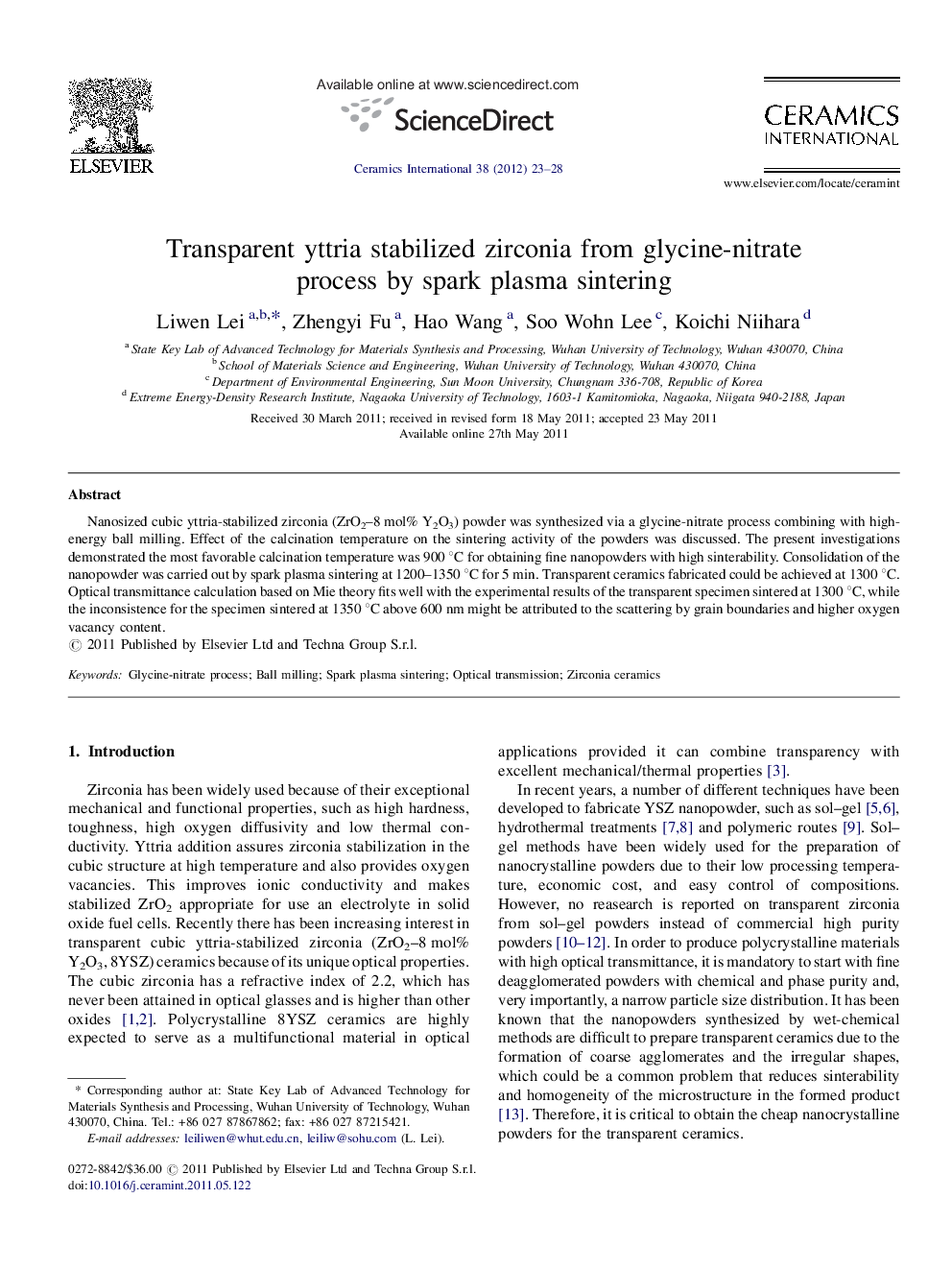| Article ID | Journal | Published Year | Pages | File Type |
|---|---|---|---|---|
| 1462824 | Ceramics International | 2012 | 6 Pages |
Nanosized cubic yttria-stabilized zirconia (ZrO2–8 mol% Y2O3) powder was synthesized via a glycine-nitrate process combining with high-energy ball milling. Effect of the calcination temperature on the sintering activity of the powders was discussed. The present investigations demonstrated the most favorable calcination temperature was 900 °C for obtaining fine nanopowders with high sinterability. Consolidation of the nanopowder was carried out by spark plasma sintering at 1200–1350 °C for 5 min. Transparent ceramics fabricated could be achieved at 1300 °C. Optical transmittance calculation based on Mie theory fits well with the experimental results of the transparent specimen sintered at 1300 °C, while the inconsistence for the specimen sintered at 1350 °C above 600 nm might be attributed to the scattering by grain boundaries and higher oxygen vacancy content.
